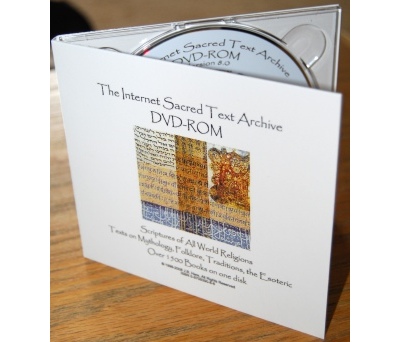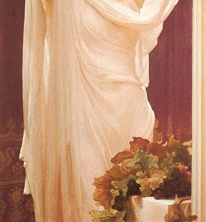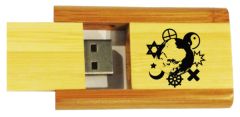Sacred-Texts
Judaism
Buy CD-ROM
Buy books about Judaism
The Babylonian Talmud
Translated by Michael L. Rodkinson
[1918]
Book 1: Tract Sabbath
Book 2: Tracts Erubin, Shekalim, Rosh Hashana
Book 3: Tracts Pesachim, Yomah and Hagiga
Book 4: Tracts Betzh, Succah, Moed Katan, Taanith, Megilla and Ebel Rabbathi or Semahoth
Book 5: Tracts Aboth, Derech Eretz-Rabba, Derech Eretz-Zuta, and Baba Kama (First Gate)
Book 6: Tract Baba Kama (First Gate), Part II and Tract Baba Metzia (Middle Gate)
Book 7: Tract Baba Bathra (Last Gate)
Book 8: Tract Sanhedrin: Section Jurisprudence (Damages)
Book 9: Tracts Maccoth, Shebuoth, Eduyoth, Abuda Zara, and Horioth
Book 10: History of the Talmud
A search for Talmud at Google will turn up hundreds of thousands
of hits, a depressing number of which are to anti-Semitic sites.
However, to our knowledge this is the first extensive
English translation of the Talmud to be posted on the Internet.
The Talmud is a vast collection of Jewish laws and traditions.
Despite the dry subject matter the Talmud makes interesting reading
because it is infused with vigorous intellectual debate,
humor and deep wisdom.
As the saying goes, 'you don't have to be Jewish'
to appreciate this text.
If you put in the hard work required to read
the Talmud, your mind will get a world-class workout.
The process of studying the Talmud has been compared with the
practice of Zen Buddhist Koan meditation, and for good reason.
Rodkinsons' ten-book edition, the only extensive one currently
in the public domain, contains complete translations of the
'Festivals' and 'Jurisprudence' sections of the Talmud.
Rodkinson only finished about a third of the Talmud.
All ten volumes were prepared at Sacred-texts and are available
here in their entirety.
Rodkinson has been widely criticized, both from traditionalist Jews who
feel that translating the Talmud is not an acceptable practice,
as well as from those hostile to the Talmud and Judaism in general.
As often seems to be the case,
the political spectrum seems to be a Mobeius loop.
All of these viewpoints are abundantly represented on the Internet.
Some quote material out of context, or ascribe hostile
intent to innocent passages.
The most hurtful critics are those who claim that Rodkinson deliberately
left out material to conceal an evil Jewish agenda.
After completion of this etext, I can unequivocally state
that this is hogwash.
Rodkinson's Talmud is, by definition, an abridgement for modern readers.
He left out only the sections where the debate spins off into complete
obscurity, and was careful to document where he did so.
Now that this incredible text, lovingly translated, is on the Internet
perhaps these criticisms can finally be put to rest.
Bibliographic note on Rodkinsons' Talmud
Rodkinson's translation went through at least two editions.
The sacred-texts version was prepared from the second edition.
All of these were from the 1918 printing,
with the exception of book 1, which was scanned from a 1903 printing.
The numbering of the volumes changed radically between the first and
second edition; to add to the confusion the second edition was
bound into a ten book set, two volumes per book.
This numbering is consistent, for instance, the second edition
book 1 contains volumes 1 and 2;
book 5 contains volumes 9 and 10, and so on.
However, the volume sequence of the first edition was completely
shuffled in the second edition;
for instance, volumes 9 and 10 of the second edition (in book 5)
correspond to volumes 1 and 2 of the first edition.
This confusion will be evident if you shop the used book market for
individual books of this set (which are fairly abundant at reasonable prices).
 Book 1: Tract Sabbath
Book 1: Tract Sabbath
Tract Sabbath discusses what can and cannot be done on the Jewish Holy day.
This tract has a wealth of information on everyday Jewish life
in late Classical times, including, for some reason,
a great number of medical recipes.
Because almost everything is done differently on the Sabbath, this contains
an incredible level of ethnographic detail about a wide
range of household activities including livestock, clothing, meals,
horticulture, hunting, and other more
obscure topics, such as fire-fighting and feminine hygiene.
Rodkinson makes the point in an appendix
that many of the Talmundic regulations which seem
to be arbitrary were developed as a response
to political persecution.
He also includes a prayer which is offered upon the conclusion of
studying any tract.
 Book 2: Tracts Erubin, Shekalim, Rosh Hashana
Book 2: Tracts Erubin, Shekalim, Rosh Hashana
Tracts from section Moed (Festivals).
Tract Erubin deals with regulations concerning travel on the Sabbath, and the
proper construction of 'Erub', propitiatory offerings for transgressions
of these rules, usually, but not always, constructed of food.
Tract Shekalim deals with tithes.
Tract Rosh Hashana discusses the Jewish New Year,
a floating holiday tied to lunar observations.
 Book 3: Tracts Pesachim, Yomah and Hagiga
Book 3: Tracts Pesachim, Yomah and Hagiga
Continuing with tracts from section Moed (Festivals).
These are primarily discussions of the rituals to be performed
on important holy days: principally Passover and the Day of Atonement.
The short third tract, Hagiga, discusses the Holocaust ceremony,
(meaning a burnt-offering), which today has come into use as a term
for the Nazi genocide.
Among other points of interest is description of the
ritual of the scapegoat in Chapter VI. of Tract Yomah;
and Chapter II. of Tract Hagiga
has a notable digression on a variety of
subjects, including the cryptic Chariot of God,
and the names and characteristics of the seven heavens.
 Book 4: Tracts Betzh, Succah, Moed Katan, Taanith, Megilla and Ebel Rabbathi or Semahoth
Book 4: Tracts Betzh, Succah, Moed Katan, Taanith, Megilla and Ebel Rabbathi or Semahoth
Completing the Festivals portion of Rodkinson's Talmud translation.
Tract Betzah details regulations about cooking, fishing, hunting and
other activities on feast days.
Tract Succah discusses the Festival of the Tabernacles, particularly the
construction and use of the Succah, or booth.
Moed Katan is about miscellaneous laws about some minor festivals, for instance
activites which are permissible during intercalendary periods.
Taanith has discussions about the beginning of the rains,
including a sequence of folktales about rainmaking Rabbis.
Megilla is about Purim, particularly about the public reading of the book
of Esther during that festival.
Ebel Rabbath is about mourning and other funerary activities.
 Book 5: Tracts Aboth, Derech Eretz-Rabba, Derech Eretz-Zuta, and Baba Kama (First Gate)
Book 5: Tracts Aboth, Derech Eretz-Rabba, Derech Eretz-Zuta, and Baba Kama (First Gate)
This book starts out with three tracts on ethics, including
the lucid and moving Pirqe Aboth (Sayings of the Fathers),
(also available at sacred-texts in a translation by Taylor).
This edition of Aboth comes with extensive commentary.
The Baba Kama is the first section of a three-part opening arc
of the Jurisprudence section.
To the modern reader it is of interest because of the unintentional
and (sometimes pungent) atmospheric details of everyday life in
first century Israel.
Many of the Baba Kama cases start when 'an ox gores' someone
or something; the modern equivalent would probably be
automobile moving violations.
The debates are notable because they are based equally on scripture and
appeals to an emerging standard of common-sense justice and human rights.
 Book 6: Tract Baba Kama (First Gate), Part II and Tract Baba Metzia (Middle Gate)
Book 6: Tract Baba Kama (First Gate), Part II and Tract Baba Metzia (Middle Gate)
The conclusion of Baba Kama, the First Gate, and Baba Metzia, the Middle Gate.
The second half of Baba Kama continues with cases involving stolen items.
Baba Metzia continues with civil law, particularly cases involving damages:
among the topics are found and loaned articles, real estate, loans,
titles, what constitutes usury and fraud, and labor law.
Many of the cases in Baba Metzia are extremely convoluted,
more so than usual.
There are a few scattered legends about the life and death of the principal
authors of the Talmud, and some notable
passages, mostly in Chapter IV.
 Book 7: Tract Baba Bathra (Last Gate)
Book 7: Tract Baba Bathra (Last Gate)
This, the third part of the 'Gate' sequence of tracts, deals with
issues of civil law regarding property, including real estate, moveable
possessions, and inheritance, in the usual great detail.
At times the discussion becomes so hypothetical that Rodkinson,
thankfully, skips ahead a bit.
Sandwiched in this very dry volume
is one wild section of Haggada
(at the end of Chapter V) which consists of some very tall tales about
fish, alligators and nautical going-ons.
Also, notably, this tract includes what has to be one of the first attempts
to discuss where transgender people fit into the legal framework.
 Book 8: Tract Sanhedrin: Section Jurisprudence (Damages)
Book 8: Tract Sanhedrin: Section Jurisprudence (Damages)
The subject matter of Tract Sanhedrin is principally crime and punishment.
One of the most notable discussions in this book is the
debate about the 'stubborn and rebellious son' (Chapter VIII).
The rabbis openly express scepticism that a son who disrespects
his father in a particular way should be put to death.
Out of this quibble over an obscure 'worst case scenario'
we see the emergence of a key principle of jurisprudence:
the execution of divine law must be tempered by human mercy.
This book also wanders far and wide,
dispensing wisdom on such topics as the location of the lost tribes,
what the windows on Noah's ark were made of, and when the Messiah
is due to arrive.
 Book 9: Tracts Maccoth, Shebuoth, Eduyoth, Abuda Zara, and Horioth
Book 9: Tracts Maccoth, Shebuoth, Eduyoth, Abuda Zara, and Horioth
This is the final book of the Rodkinson translation of the Talmud; it contains the remaining portions of the Jurisprudence section.
Tract Maccoth deals with corporal punishment.
Tract Shebuoth discusses oaths: what constitutes an oath, false oaths,
and so on.
Tract Eduyoth is a grab-bag of Mishna without commentary which
give various cases related to other Talmud tracts.
Tract Abuda Zara elaborates the Biblical commandment not to worship
idols; it is of historical interest because of the tangential information
about what the idolators (i.e. ancient Pagans) did or did not do.
Tract Horioth is another short tract which discusses a number of
very technical issues, including the hierarchy of dogs, cats and mice.
 Book 10: History of the Talmud
Book 10: History of the Talmud
This is the introduction to Rodkinsons' Talmud translation.
A history of the Talmud,
starting with its five hundred years of
composition from the first to fifth centuries C.E.,
and its bitter persecution from antiquity,
through the Reformation up to the 19th Century.
Includes biographies of the dozens of authors who wrote the Talmud,
and a detailed bibliography through 1900.






